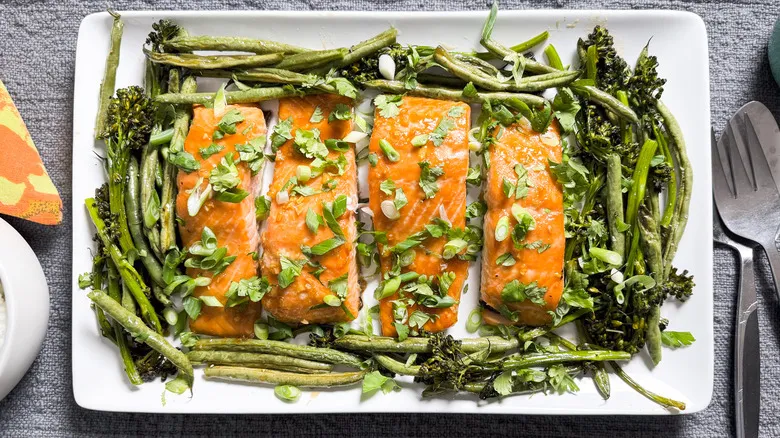Gather the roasted miso maple salmon ingredients
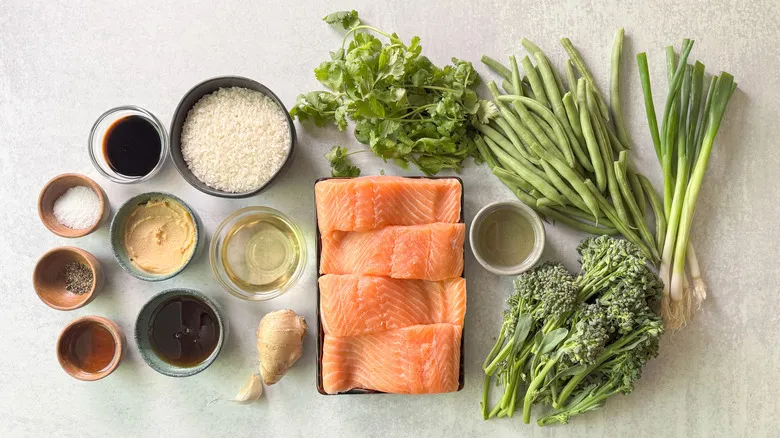
To make this recipe, begin with thick-cut salmon fillets that still have their skin on. Keeping the skin helps maintain the integrity of the fillets and locks in moisture while adding a touch of fat to the meat. Be sure to rinse and pat your fillets dry, and avoid a common mistake by removing any pin bones before cooking. The rich umami flavor in this dish comes from a marinade made with white miso paste, maple syrup, mirin, soy sauce, sesame oil, minced garlic, and ginger. A portion of this marinade is set aside to drizzle over the salmon at the end of roasting, allowing it to caramelize beautifully on the surface. You will also prepare cilantro rice using basic white rice, sea salt, and fresh cilantro. Tender broccolini and green beans, lightly tossed in avocado oil, are added to the same sheet pan as the salmon, and everything is roasted together. The dish is completed with sliced scallions and a sprinkle of additional chopped cilantro.
Step 1: Make the miso maple marinade
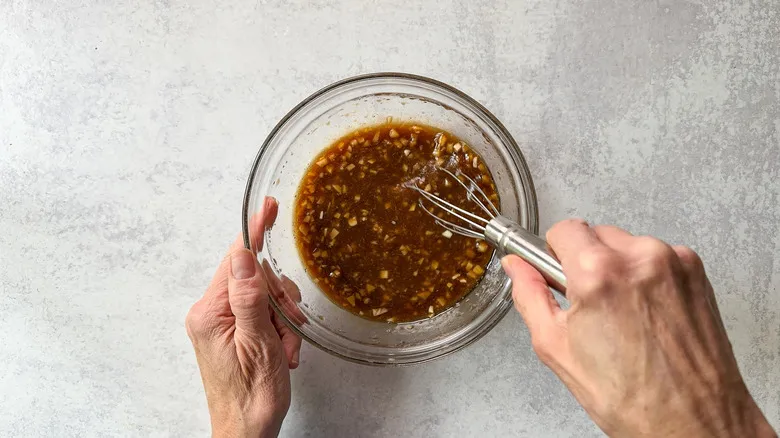
In a mixing bowl, combine the miso, maple syrup, mirin, soy sauce, sesame oil, garlic, and ginger.
Step 2: Set aside some marinade

Reserve 2 tablespoons of the miso maple marinade in a small bowl.
Step 3: Marinate the salmon

Put the salmon fillets into a large ziplock bag and pour in the rest of the marinade.
Step 4: Refrigerate the salmon
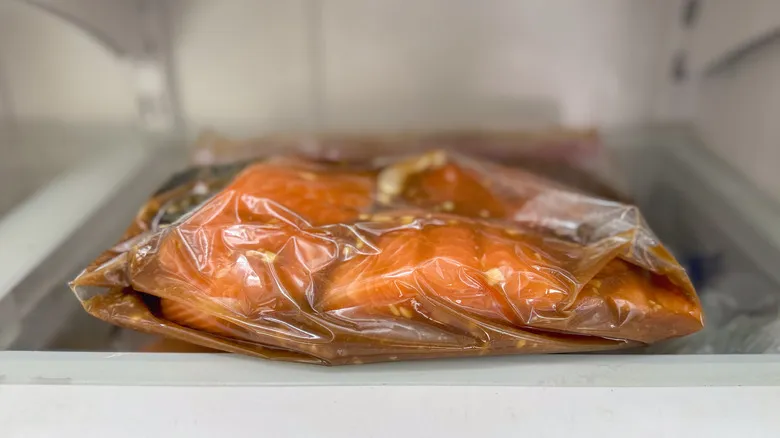
Chill the salmon in the refrigerator for 30 minutes.
Step 5: Boil water for the rice
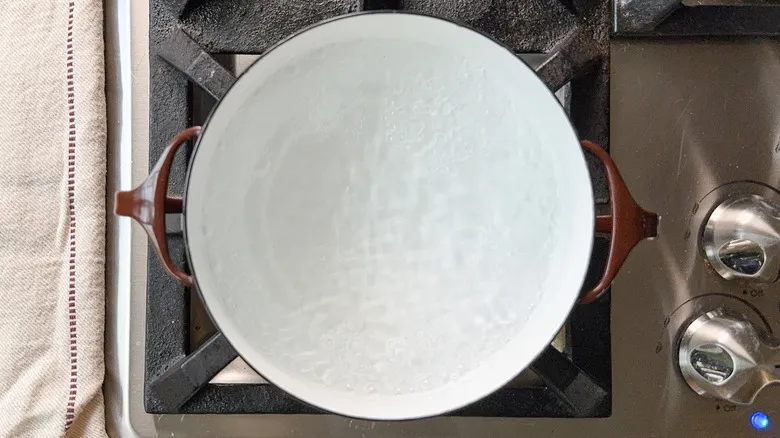
As the salmon marinates, heat 2 cups of water with 1 teaspoon of sea salt until it reaches a boil.
Step 6: Add the rice
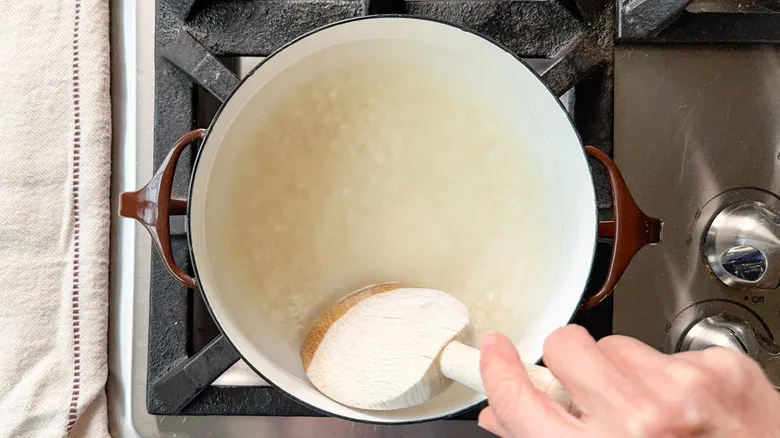
Incorporate the rice, mix well, and return to a gentle simmer.
Step 7: Cover the rice

Cover and simmer for 15 minutes.
Step 8: Fluff the rice and add cilantro
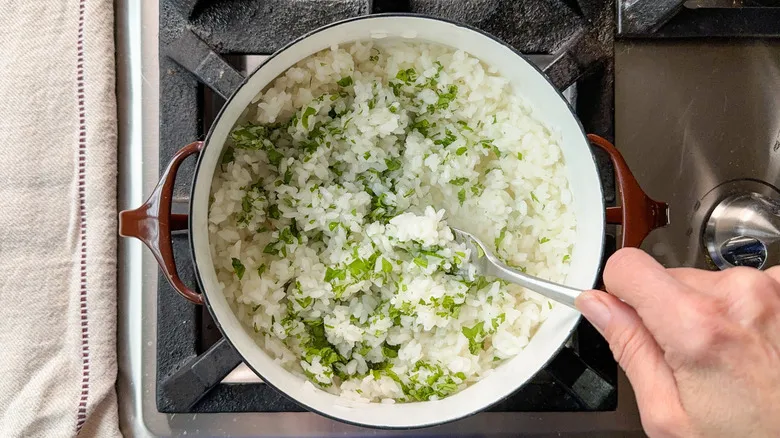
Remove the heat, fluff the rice, and mix in ¼ cup of the cilantro. Cover and let it sit.
Step 9: Preheat the oven
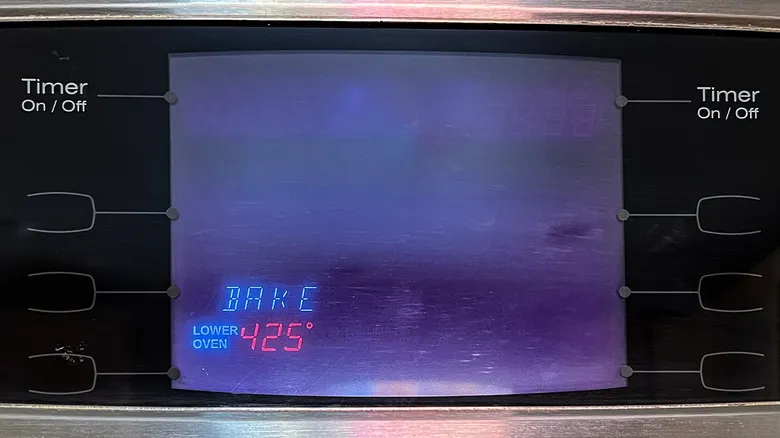
Set the oven temperature to 425°F.
Step 10: Prep a baking sheet
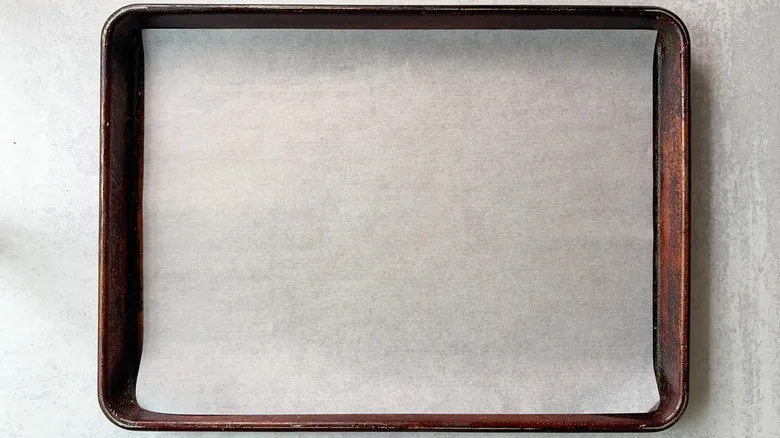
Prepare a baking sheet by lining it with parchment paper.
Step 11: Remove the salmon from the marinade
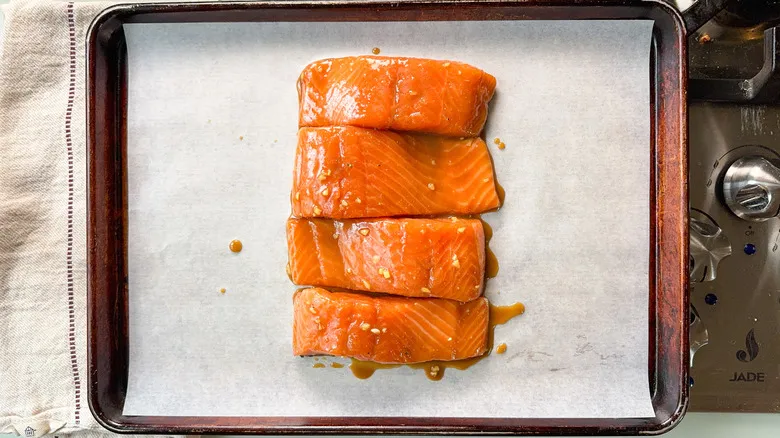
Take the salmon fillets out of the marinade, allowing any excess to drip off, and arrange them on the prepared baking sheet with the skin facing down. Dispose of the marinade.
Step 12: Toss the broccolini and green beans with the avocado oil
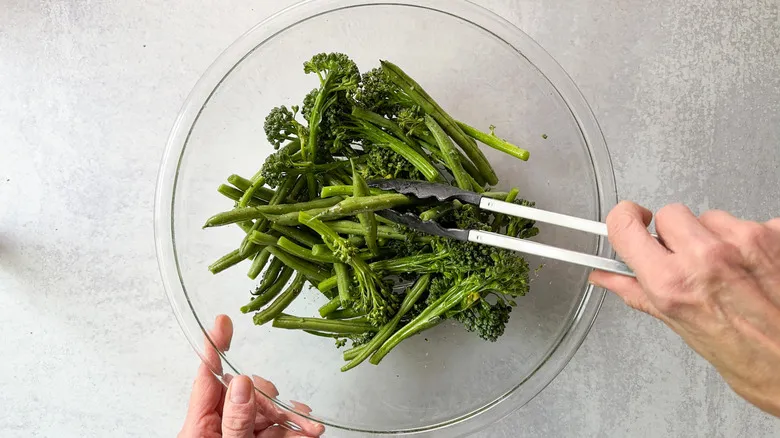
In a large bowl, combine the broccolini and green beans with the avocado oil, the remaining teaspoon of sea salt, and pepper. Toss well to mix.
Step 13: Arrange the vegetables around the salmon
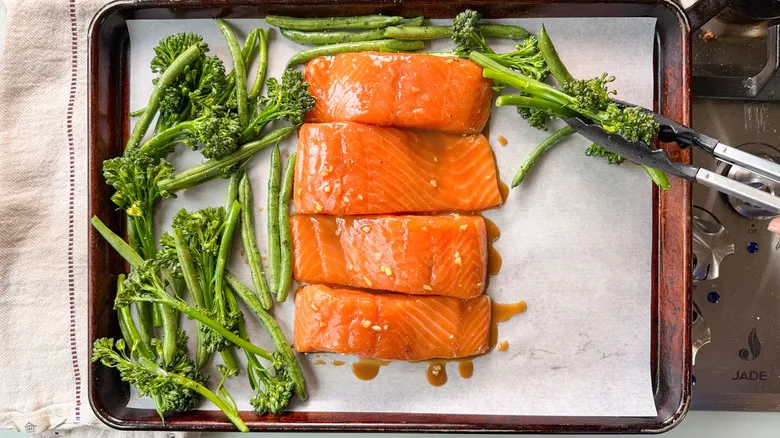
Place the vegetables around the salmon on the baking tray.
Step 14: Roast the salmon

Cook the salmon and vegetables for 10 minutes, then pour the remaining 2 tablespoons of marinade over the salmon.
Step 15: Finish baking the salmon and vegetables
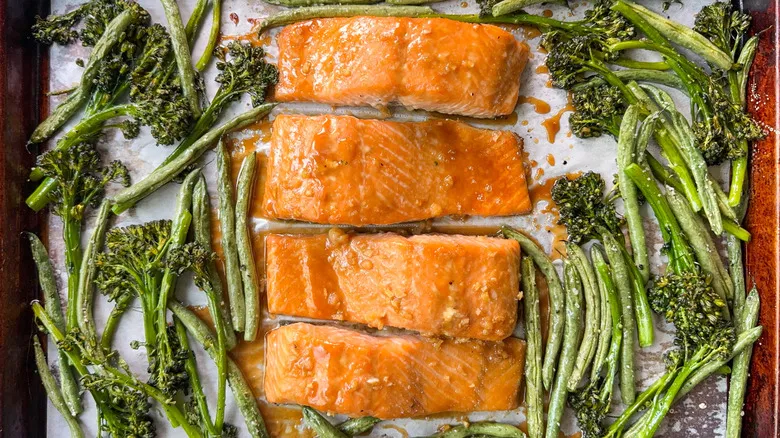
Continue baking for another 5 minutes or until the salmon is opaque and the green beans are soft.
Step 16: Plate the salmon and vegetables
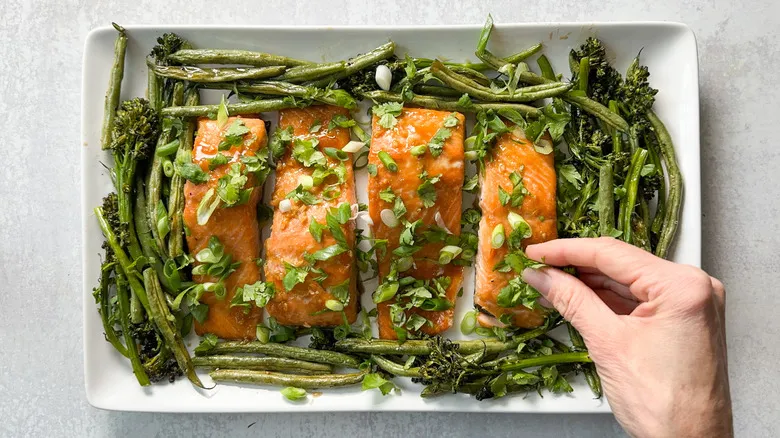
Move the salmon and vegetables to a serving dish and top with the leftover cilantro and scallions.
Step 17: Serve the roasted miso maple salmon with the rice
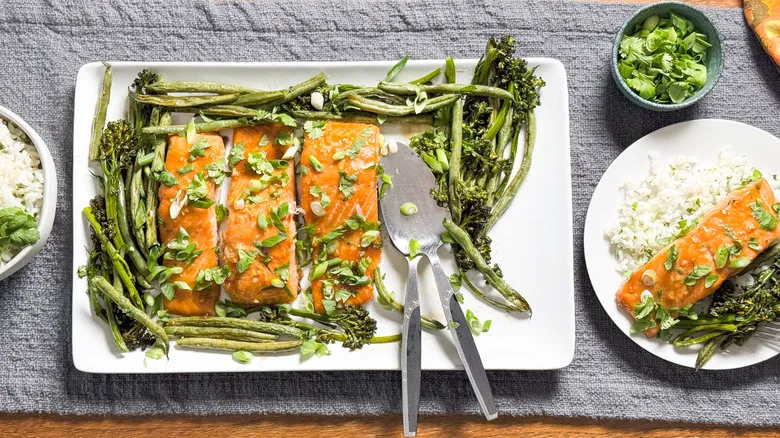
Accompany the roasted miso maple salmon with a side of rice.
What is miso paste and what are some other ways to use it?
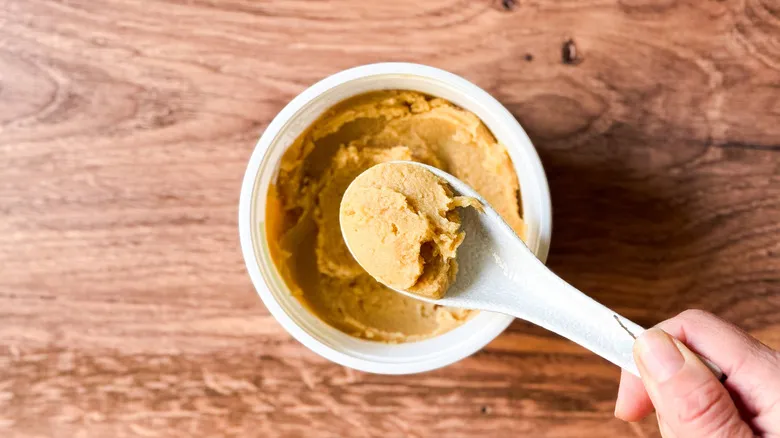
Miso paste is a flavorful condiment rich in umami, created from fermented soybeans, salt, and koji (a fermentation agent derived from grains). While there are countless varieties of miso in Japan and beyond, the United States typically recognizes three main types: white, yellow, and red. Generally, the darker the miso, the stronger the flavor, which results from a longer fermentation process. The white miso featured in this salmon recipe is the mildest option, offering a subtle sweetness that complements its saltiness. This variety serves as the foundation for miso soup, dressings, sauces, and lighter dishes like miso garlic mashed potatoes. Additionally, white miso can be a surprising ingredient in sweet treats such as chocolate chip cookies or rice krispie treats.
On the flavor spectrum, yellow miso undergoes a slightly longer fermentation, incorporates more barley and less rice than white miso, and presents a more robust earthy flavor. According to Kinnaird, this type of miso is ideal for hearty soups, marinades for poultry, or more robust condiments. Finally, red miso, which is fermented for 12 months or longer, contains the highest concentration of soybeans and boasts a deep reddish-brown hue. It pairs best with red or game meats, hearty stews, or as a rich glaze.
What is the best type of salmon to use for this recipe?
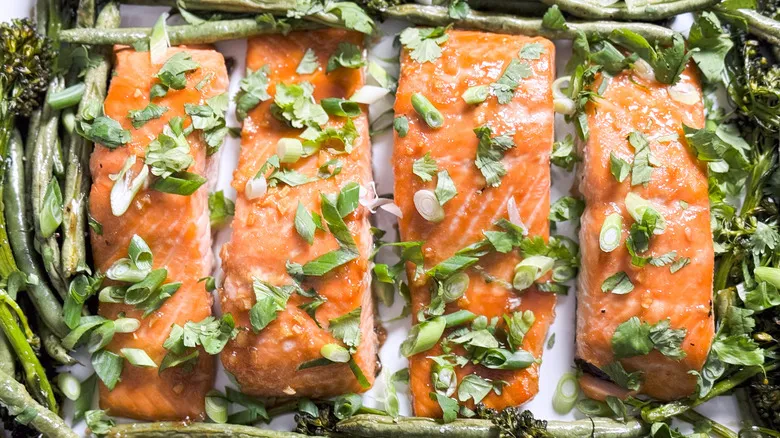
Selecting salmon for a recipe involves more than just choosing a basic skin-on fillet. First, you need to decide between wild-caught and farmed fish. Pacific salmon varieties include Chinook, Sockeye, and Coho, which are typically caught in the open ocean using lines or nets, although they can also be farmed. Most of the Atlantic salmon available in the U.S. market is farmed, as this species is protected. If the salmon is farmed, it is usually labeled as such in grocery stores.
Farmed salmon may carry a higher risk of toxicity, as these fish are often fed undisclosed amounts of pesticides and antibiotics, along with unnatural pellet diets. The most sustainable options are wild and line-caught salmon, which Kinnaird notes she generally prefers for their flavor and quality. Regardless of the type of salmon you select, always check for a nice sheen on the flesh, a firm texture, and an absence of strong fishy odors.
Recommended

Chewy Coconut Chocolate Chip Cookies Recipe

Coconut Baked Donuts Recipe
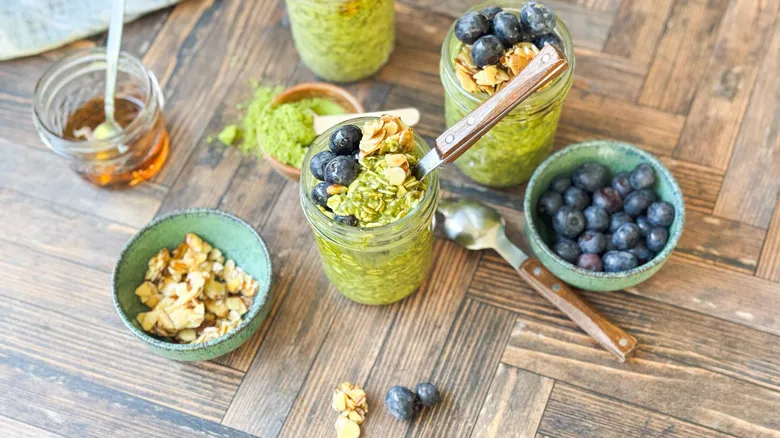
Matcha Almond Overnight Oats Recipe
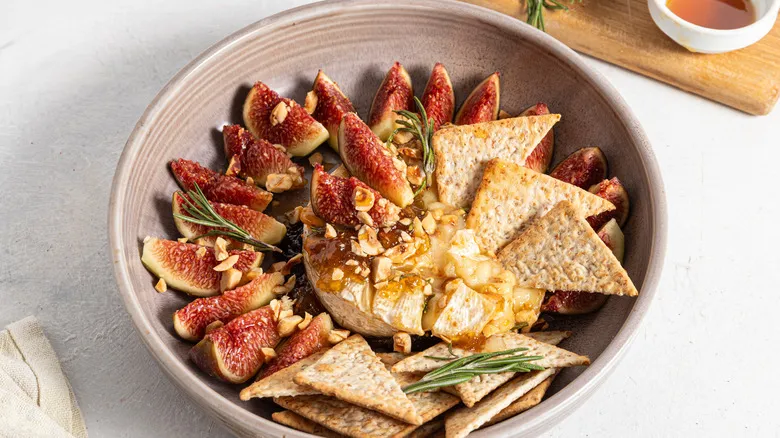
Hazelnut And Fig Baked Brie Recipe
Next up

